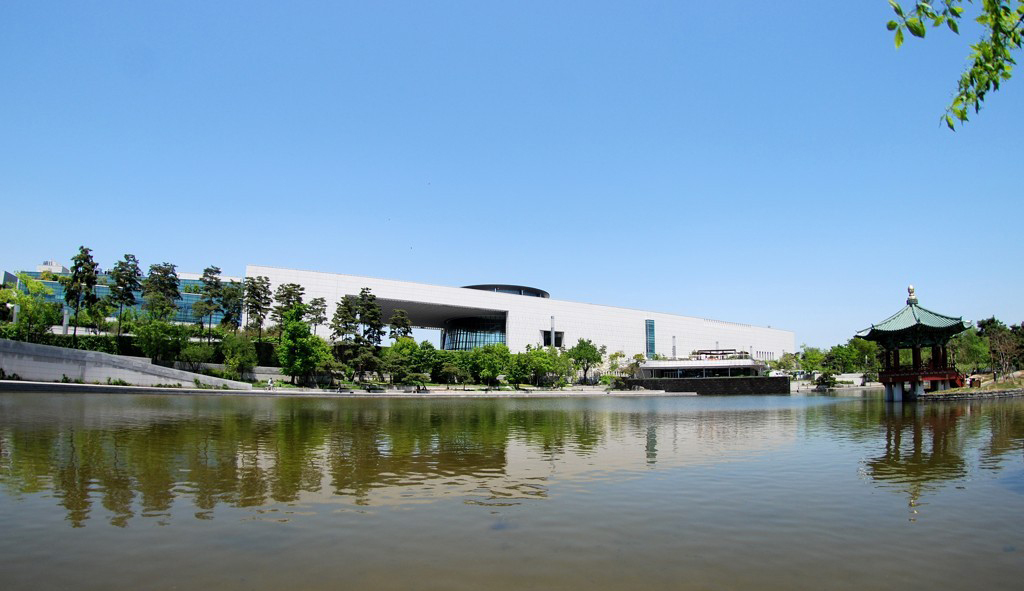Culture Ministry plans to expand art infrastructure
By Yoon Min-sikPublished : June 24, 2019 - 16:24
The Ministry of Culture, Sports and Tourism on Monday rolled out a five-year plan to make Korean art and artifacts more accessible to the general public. The plan includes building more art galleries and museums, expanding the conservation system for the collections and creating online and mobile systems for people to acquire information on exhibitions.
According to the ministry, the government plans to build an additional 140 museums and 46 art galleries by 2023, which will bring the number of such institutions to 1,013 and 297, respectively. It expressed hope that tax deductions on museum and art gallery admissions fees that take effect from July 1 would contribute to this goal.
According to the ministry, the government plans to build an additional 140 museums and 46 art galleries by 2023, which will bring the number of such institutions to 1,013 and 297, respectively. It expressed hope that tax deductions on museum and art gallery admissions fees that take effect from July 1 would contribute to this goal.

In a bid to maximize administrative efficiency, the government will reduce the categories of museums by combining the “comprehensive” and “specialized” museums, which the current law sorts by the type of collection held by the museum.
While the current law mandates that the museums founded and operated by regional governments are to be inspected prior to their official opening, the new plan sees institutions operated by the central government subjected to the same measure.
The state-run National Museum of Korea has developed and distributed what is called a “cultural heritage management system,” which allows institutions to manage their collections digitally while sharing information with other institutions that use the system. This system has been used mostly by museums, but the ministry said it will be remodeled to be applied to art galleries as well.
An art and artifact conservation system used at state-run museums and galleries will be expanded to those run by regional governments, and up to 50 percent of construction costs can be covered by the state when the regional government wishes to build a large-scale storage for the artwork and relics.
An app that provides information on nearby museums and galleries is in the development and policies to encourage museums and galleries to install aids for those who have difficulty visiting the institutions are under way.
A “smart museum/art gallery” at state-run institutions will use augmented reality and virtual reality technology, as well as developing digital content that allow users to experience the cultural content without a physical visit.
Such technologies have been used in exhibitions and events. During the 2018 PyeongChang Winter Games, a virtual reality device was installed at Jinbu Station where visitors were able to experience PyeongChang’s natural environment and cultural assets.
Last year, the National Intangible Heritage Center and National Palace Museum of Korea announced the establishment of the Korean Heritage project via Google Art and Culture, an online platform that holds data on over 6 million art pieces and artifacts from 1,500 organizations in 70 countries.
Additional measures to encourage privatization of museums and galleries will also be implemented. The government is pushing to reintroduce a system that will reduce tax when transfer of ownership occurs in such institutions. The scheme was abolished after being in effect between 1996 and 2006. The current law allows the tax to be paid over three years.
By Yoon Min-sik
(minsikyoon@heraldcorp.com)








![[Kim Seong-kon] Democracy and the future of South Korea](http://res.heraldm.com/phpwas/restmb_idxmake.php?idx=644&simg=/content/image/2024/04/16/20240416050802_0.jpg&u=)








![[KH Explains] Hyundai's full hybrid edge to pay off amid slow transition to pure EVs](http://res.heraldm.com/phpwas/restmb_idxmake.php?idx=652&simg=/content/image/2024/04/18/20240418050645_0.jpg&u=20240418181020)

![[Today’s K-pop] Zico drops snippet of collaboration with Jennie](http://res.heraldm.com/phpwas/restmb_idxmake.php?idx=642&simg=/content/image/2024/04/18/20240418050702_0.jpg&u=)